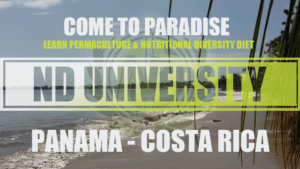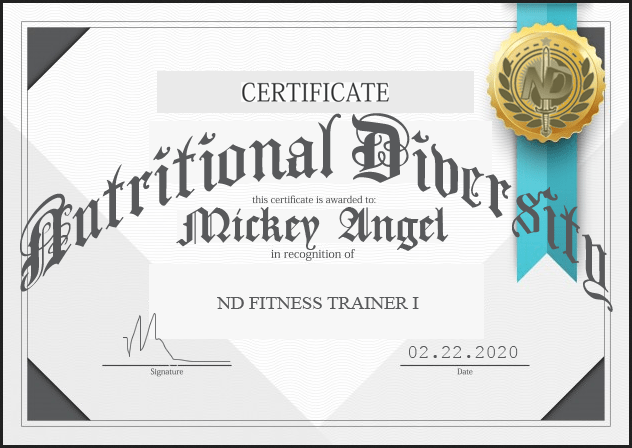Physical Condition
Best All-Natural Blood Clotting Disorder Remedies
There are several herbs and plants that are believed to have properties that may help relieve blood clotting and blood clotting disorders.
In this article we go over some of the more common, easier to get a hold of plants to try and address this issue in an all-natural way.
It’s important to note that while some of these herbs have been used traditionally for these purposes, scientific evidence regarding their effectiveness is often limited or inconclusive. It is always recommended to consult with a healthcare professional before using any herbal remedies, especially if you have a blood clotting disorder or are taking medications. Here are a few herbs and plants that have been associated with potential benefits:
- Ginger (Zingiber officinale): Ginger is known for its anti-inflammatory properties and may help inhibit blood clotting by reducing platelet aggregation. It can be consumed in various forms, including fresh, dried, or as a tea.
- Turmeric (Curcuma longa): Turmeric contains an active compound called curcumin, which has anti-inflammatory and anticoagulant properties. It may help inhibit platelet aggregation and reduce the risk of blood clots. Turmeric can be used as a spice in cooking or taken as a supplement.
- Garlic (Allium sativum): Garlic is believed to have natural blood-thinning properties. It contains a compound called allicin, which may help prevent the formation of blood clots. Garlic can be consumed raw, cooked, or as a supplement.
- Ginkgo biloba: Ginkgo biloba is commonly used in traditional medicine and is believed to have anticoagulant and vasodilatory effects. It may help improve blood flow and reduce the risk of blood clots. Ginkgo biloba supplements are available in various forms.
- Hawthorn (Crataegus spp.): Hawthorn is known for its cardiovascular benefits and may help improve circulation. It has been traditionally used to support heart health and reduce the risk of blood clots. Hawthorn can be consumed as a tea or taken as a supplement.
- Bilberry (Vaccinium myrtillus): Bilberry is rich in antioxidants and may help improve blood circulation and strengthen blood vessel walls. It may have antiplatelet and anticoagulant effects, potentially reducing the risk of blood clots. Bilberry can be consumed fresh, dried, or as a supplement.
- Horse chestnut (Aesculus hippocastanum): Horse chestnut extract is often used to support vein health and improve blood circulation. It may help reduce inflammation and prevent blood clots. Horse chestnut supplements are available in various forms.
Remember, it’s crucial to consult with a healthcare professional before using any herbal remedies, especially if you have a blood clotting disorder or are taking medications. They can provide personalized advice based on your specific condition and medical history.
Related:
Physical Condition
Planetary Alignment on Jan. 21 !!
Twenty Twenty Five not only kicked off with a meteor shower, but another big spectacle is coming up that should be on your radar, too.
Here’s what to look forward to and how to watch.
Planetary alignment on Jan. 21
Planetary alignment is when several planets gather closely on one side of the sun simultaneously, according to Starwalk.space.
This is colloquially referred to as a “planetary parade,” or a “parade of planets,” but these are not astronomy terms used to describe the event, according to NASA. [i]
Could be a vehicle of amplified prayer? A gateway or skipping stone alignment for some kind of cosmic energy?
Historical planetary alignments have fascinated astronomers, astrologers, and historians for centuries. Planetary alignments occur when planets appear to form a line or cluster from the perspective of Earth. This phenomenon can range from partial alignments of a few planets to rare, significant alignments involving most or all of the visible planets.
Key Points About Planetary Alignments:
- Definition of Alignment:
- A “planetary alignment” does not mean planets are perfectly in a straight line, as they orbit on different planes. Instead, it refers to planets appearing roughly in the same part of the sky.
- Frequency:
- Alignments of a few planets are relatively common and occur every few decades.
- Alignments involving many planets, such as the five classical naked-eye planets (Mercury, Venus, Mars, Jupiter, and Saturn), are rarer and may happen once every few centuries.
- Cultural and Historical Significance:
- Many ancient civilizations, such as the Babylonians, Mayans, and Chinese, observed planetary alignments and associated them with significant events or omens.
- Alignments have often been linked to myths, religious events, or predictions of upheaval.
Notable Historical Alignments:
- 6th Century BCE (c. 576 BCE):
- A near-perfect alignment of all five visible planets may have influenced early astrological systems in Mesopotamia.
- 2 BCE (The “Star of Bethlehem”):
- A notable conjunction of Venus and Jupiter, possibly accompanied by other celestial phenomena, has been speculated to be the “Star of Bethlehem” mentioned in the Bible.
- 1186 CE:
- Medieval scholars and astrologers predicted a catastrophic event due to an alignment of planets, which did not materialize.
- Grand Conjunctions:
- These are alignments of Jupiter and Saturn, occurring roughly every 20 years. A famous one occurred in 1623 but was difficult to see due to proximity to the Sun. The December 2020 Grand Conjunction was a highly visible event.
- 1962 Planetary Alignment:
- All the planets (except Neptune and Pluto) aligned on one side of the Sun. Some believed it would cause cataclysmic events, but none occurred.
- 2000 “Y2K Alignment”:
- On May 5, 2000, Mercury, Venus, Mars, Jupiter, and Saturn aligned with the Earth and the Sun. Some predicted natural disasters due to tidal effects, but the event passed uneventfully.
- December 21, 2012:
- The end of the Mayan Long Count Calendar coincided with a loose alignment of the Sun, Earth, and the galactic center, sparking widespread (and unfounded) doomsday predictions.
Future Alignments:
- 2040 Planetary Alignment:
- A rare and visible alignment of the five naked-eye planets will occur, visible without telescopes.
- Alignments in the Next Century:
- Planetary alignments involving most visible planets will occur at intervals but remain rare, continuing to captivate human imagination.
Scientific Perspective:
While planetary alignments are visually striking and culturally significant, their gravitational effects on Earth are negligible compared to the Moon and Sun. Modern science sees these events as beautiful astronomical phenomena rather than harbingers of change.
Would you like to explore a specific alignment or its implications?
Physical Condition
A Look at all Natural PTSD Treatment Ideas
Post Traumatic Stress Disorder is more common than you think and much of it is undiagnosed. It’s important to understand that many people are suffering from this and get an idea of what it is they are struggling with.
We are not doctors, we are a small group of veterans, ecologists, athletes, and nutritionists. This ABSTRACT work is for scientific diet study, and anyone considering implementing anything contained herein, should consult with their doctor and several other health professionals before taking anything or doing anything new.
Living with PTSD can be a challenging and overwhelming experience. It’s essential to remember that everyone’s experience with PTSD is unique, but here are some common symptoms and challenges that a person with PTSD may go through:
- Flashbacks and Intrusive Memories: Individuals with PTSD often experience vivid and distressing flashbacks, which are like re-living the traumatic event. Intrusive memories can come unexpectedly and cause intense emotions.
- Avoidance: PTSD can lead to avoiding places, people, or activities that remind the person of the traumatic event. Avoidance can extend to discussing or thinking about the event to protect themselves from overwhelming emotions.
- Hyperarousal: People with PTSD may feel constantly on edge or hypervigilant as if they are always in danger. This heightened state of arousal can lead to difficulty sleeping, irritability, and a sense of being easily startled.
- Emotional Numbing: Some individuals with PTSD may experience emotional numbness or a sense of detachment from their emotions, others, or the world around them. This emotional distancing can be a coping mechanism to shield themselves from pain.
- Negative Thoughts and Feelings: Negative thoughts about oneself, others, or the world may become common. There may be feelings of guilt, shame, anger, or a diminished sense of self-worth.
- Sleep Disturbances: Sleep problems are prevalent among individuals with PTSD. They may have trouble falling asleep, staying asleep, or experiencing nightmares related to the traumatic event.
- Emotional Reactivity: People with PTSD may experience intense emotional reactions to seemingly unrelated triggers due to the brain’s association of these stimuli with the traumatic event.
- Difficulty Concentrating: Trouble focusing on tasks and memory problems can arise, making it challenging to carry out daily activities.
- Social Withdrawal: PTSD can lead to withdrawing from social interactions and a decreased interest in activities that were once enjoyable.
- Hypervigilance in Relationships: In relationships, individuals with PTSD may have difficulty trusting others and maintaining emotional closeness due to fear of vulnerability.
- Physical Symptoms: PTSD can manifest physically, leading to headaches, gastrointestinal issues, dizziness, or other stress-related symptoms.
It’s important to note that these symptoms can vary in intensity and may come and go over time. Coping with PTSD is a complex process that requires understanding, support, and appropriate treatment. If you or someone you know is experiencing symptoms of PTSD, it’s essential to seek help from a qualified mental health professional who can provide a proper diagnosis and create a personalized treatment plan.
There are practices that many have felt helped in their journey with PTSD.
We are not medical professionals but can offer some all-natural practices and herbs that some people find helpful in managing PTSD (Post-Traumatic Stress Disorder) symptoms. It’s essential to consult with a healthcare professional before starting any new treatments or supplements, as they can provide personalized advice and ensure it is safe for your specific situation.
- Mindfulness and Meditation: Mindfulness practices, such as meditation and deep breathing exercises, can help reduce stress and anxiety associated with PTSD. It can also improve emotional regulation and create a sense of calm.
- Yoga: Yoga combines physical postures, breathing techniques, and meditation, which can help reduce stress and promote relaxation.
- Exercise: Engaging in regular physical activity can release endorphins and help improve mood, reduce anxiety, and enhance overall well-being.
- Herbal Teas: Some herbs are known for their calming properties and may be beneficial for individuals with PTSD. Chamomile, lavender, passionflower, and valerian root are some herbs commonly used for relaxation.
- Ashwagandha: This adaptogenic herb is believed to help the body adapt to stress and has been used traditionally in Ayurvedic medicine for anxiety and stress-related conditions.
- Rhodiola Rosea: Another adaptogenic herb that may help improve resilience to stress and reduce anxiety.
- Holy Basil (Tulsi): This herb is known for its calming and balancing effects and has been used in traditional medicine for stress relief.
- St. John’s Wort: Some studies suggest that St. John’s Wort may be helpful in managing symptoms of depression and anxiety. However, it can interact with certain medications, so it’s essential to consult a healthcare professional before using it.
- Passionflower: This herb has calming properties and may help reduce anxiety and promote better sleep.
- Lavender Essential Oil: Aromatherapy with lavender essential oil may have a calming effect and help alleviate stress and anxiety.
Remember that natural remedies are not a replacement for professional medical care. It’s crucial to work with a qualified healthcare provider to create a comprehensive treatment plan that suits your specific needs. PTSD is a complex condition, and a combination of approaches, including therapy and medication when appropriate, maybe the most effective way to manage symptoms.
Let’s explore some of the all-natural practices in more detail that can be beneficial for individuals dealing with PTSD:
- Mindfulness-Based Stress Reduction (MBSR): MBSR is a structured program that incorporates mindfulness meditation, body awareness, and yoga. It has been shown to reduce symptoms of anxiety, depression, and stress, making it potentially beneficial for those with PTSD.
- Trauma-Informed Yoga: Some yoga practices are specifically tailored to address trauma and PTSD. Trauma-informed yoga focuses on creating a safe and non-judgmental environment, allowing individuals to reconnect with their bodies and emotions.
- Grounding Techniques: Grounding techniques involve using the five senses to bring attention back to the present moment and away from traumatic memories. For example, you can focus on the feeling of your feet on the ground, listen to calming sounds, or hold an object that provides comfort.
- Nature Therapy (Ecotherapy): Spending time in nature has been shown to have positive effects on mental health. Ecotherapy involves activities like hiking, gardening, or simply being outdoors, which can reduce stress and promote emotional well-being.
- Art and Expressive Therapies: Engaging in creative activities, such as art, music, or dance, can help individuals process emotions and traumatic experiences in a non-verbal and expressive way.
- Acupuncture: This ancient Chinese practice involves the insertion of thin needles into specific points on the body to promote balance and healing. Some studies suggest that acupuncture may help reduce PTSD symptoms.
- Breathwork: Controlled and intentional breathing techniques can help regulate the body’s stress response and induce a sense of relaxation. Practices like deep breathing or diaphragmatic breathing can be beneficial.
- Journaling: Writing about thoughts, emotions, and experiences can provide a therapeutic outlet for processing trauma and promoting self-awareness.
- Support Groups: Participating in support groups with others who have experienced trauma can create a sense of belonging, reduce isolation, and offer mutual understanding and encouragement.
- Animal-Assisted Therapy: Interacting with animals, such as therapy dogs or horses, can have a calming and soothing effect, helping individuals feel more grounded and safe.
Remember that not all practices will work the same way for everyone, and finding the right combination of natural techniques might require some trial and error. It’s crucial to be patient with yourself and seek professional support from therapists or counselors who specialize in trauma and PTSD treatment. Integrating these natural practices with evidence-based therapies can provide a holistic approach to healing and recovery.
What not to do:
Individuals with PTSD should generally avoid things that can exacerbate their symptoms or trigger distressing reactions. Here are some things that people with PTSD may consider avoiding or minimizing:
- Trauma Triggers: Avoid situations, places, or people that trigger traumatic memories or feelings of distress. These triggers can vary from person to person, so identifying and managing them is essential for well-being.
- Substances: Alcohol and recreational drugs can interfere with the body’s ability to cope with stress and emotions. They may also worsen anxiety and depression symptoms. It’s best to avoid or limit the use of these substances.
- Isolation: Social isolation can intensify feelings of loneliness and exacerbate PTSD symptoms. Engaging in supportive relationships and seeking connection with others can be helpful.
- Overwhelming Media: Avoid graphic or violent media content that could retraumatize or trigger distressing emotions.
- Negative Self-Talk: Stay away from negative self-talk or self-blame related to the traumatic event. Practice self-compassion and seek support from therapists or support groups.
- Excessive News Consumption: Constant exposure to distressing news can contribute to increased stress and anxiety. Limit news consumption if it’s negatively affecting mental health.
- High-Stress Environments: High-stress environments can exacerbate PTSD symptoms. Whenever possible, try to create a calm and supportive environment at home and work.
- Strenuous Activities without Preparation: Engaging in intense or challenging activities without proper preparation may lead to increased stress and feelings of vulnerability. Gradually work up to challenging activities when you feel ready.
- Avoidance of Treatment: Avoiding professional treatment for PTSD can hinder healing and recovery. Seeking therapy, counseling, or medication when appropriate is crucial for managing symptoms effectively.
- Self-Medicating: Using substances or other unhealthy coping mechanisms to numb or escape from emotions is not a sustainable solution and may lead to more significant problems in the long run.
Remember that everyone’s experience with PTSD is unique, and different individuals may have varying triggers and coping strategies. It’s essential for individuals with PTSD to work with mental health professionals who can help identify specific triggers and develop personalized coping mechanisms to manage symptoms effectively. Additionally, a support system of friends, family, or support groups can be valuable in the healing process.
Physical Condition
Best All-Natural Higher Energy Levels
Here are some all-natural herbs and plants that are believed to help increase energy levels:
ABSTRACT
HERBS
- Ginseng: Ginseng is a popular herb used to enhance energy and vitality. Both Asian ginseng (Panax ginseng) and American ginseng (Panax quinquefolius) are known for their adaptogenic properties, which may help combat fatigue and boost energy.
- Maca root: Maca root is a Peruvian herb known for its energizing effects. It is believed to support adrenal function and hormone balance, which can contribute to increased energy levels.
- Ashwagandha: Ashwagandha is an adaptogenic herb used in traditional Ayurvedic medicine. It may help reduce stress, improve overall well-being, and enhance energy and vitality.
- Rhodiola rosea: Rhodiola rosea is an adaptogenic herb that has been traditionally used to combat fatigue and increase energy levels. It is believed to help improve mental and physical performance.
- Green tea: Green tea contains caffeine and L-theanine, which can provide a gentle energy boost without the jittery effects of coffee. It also contains antioxidants that promote overall health.
- Peppermint: The scent of peppermint has been shown to increase alertness and cognitive performance. Inhaling peppermint essential oil or sipping peppermint tea may help provide a natural energy boost.
- Eleuthero (Siberian ginseng): Eleuthero is another adaptogenic herb that may help increase energy levels, reduce fatigue, and enhance stamina. It is believed to support adrenal gland function and improve the body’s response to stress.
- Holy basil (Tulsi): Holy basil is considered a sacred herb in Ayurvedic medicine. It is believed to enhance energy, promote mental clarity, and reduce stress.
- Yerba mate: Yerba mate is a traditional South American herbal tea that contains caffeine and other stimulants. It provides a natural energy boost and may improve focus and mental alertness.
- Cordyceps: Cordyceps is a type of mushroom with adaptogenic properties. It is believed to enhance energy and endurance, improve oxygen utilization, and support overall vitality.
Remember that while these herbs and plants have been traditionally used for energy-boosting purposes, individual responses may vary. It’s always a good idea to consult with a healthcare professional before incorporating new herbs or supplements into your routine, especially if you have any underlying health conditions or are taking medications.
Moreso than herbs potentially,
PRACTICE
If you’re looking for all-natural remedies to boost your energy levels, here are some suggestions:
- Get enough sleep: Adequate sleep is essential for maintaining energy levels. Aim for 7-9 hours of quality sleep per night to feel refreshed and energized.
- Stay hydrated [2]: Dehydration can lead to fatigue. Ensure you’re drinking enough water throughout the day to maintain proper hydration levels.
- Exercise regularly: Engaging in regular physical activity can increase your energy levels. Exercise improves circulation, releases endorphins, and boosts overall vitality. Find activities you enjoy, such as walking, jogging, cycling, or yoga.
- Manage stress: Chronic stress can drain your energy. Incorporate stress management techniques into your routine, such as meditation, deep breathing exercises, or engaging in hobbies that help you relax.
- Eat a balanced diet: Opt for whole, nutrient-dense foods to fuel your body. Include lean proteins, complex carbohydrates, fruits, vegetables, and healthy fats in your meals. Avoid excessive consumption of processed foods, sugary snacks, and refined carbohydrates, as they can lead to energy crashes.
- Do not consume alcohol.
- Stay active throughout the day: Avoid sitting for prolonged periods. Take short breaks to stretch, walk around, or perform light exercises to keep your blood flowing and energy levels up.
- Herbal remedies: Certain herbs and supplements are believed to enhance energy levels. Some examples include ginseng, ashwagandha, rhodiola rosea, and maca root (listed above). Consult with a healthcare professional before starting any new supplements.
- Stay social & stay alone: Yet, another lesson in balance. Interacting with others and maintaining a social support network can boost your mood and energy levels. Engage in activities with friends and loved ones to feel more energized. Making sure this social time is maximized by planning and organized strategically to break up the majority of time which should be spent alone, to ensure productivity. All time social will lead to a costly lack of progress at some point.
- Prioritize relaxation and self-care: ‘Occupational Therapy’ Taking time for yourself and engaging in activities that bring you joy and relaxation can replenish your energy reserves. This can include reading, listening to music, taking a bath, or engaging in a hobby.
- Nature! Spend more time in nature and get much of what you need.
Remember, it’s essential to listen to your body and address any underlying health concerns that may be affecting your energy levels. If you continue to experience persistent fatigue despite trying these natural remedies, it’s advisable to consult a healthcare professional for further evaluation.
EXPERIENCE
Many times, lack of energy is hydration, and the color yellow, in the urine is to let us know when it is time to drink more water. Firstly, make sure you are drinking enough water.
Related:
-

 Agriculture2 years ago
Agriculture2 years agoWhy Small Alternative Tropical Agriculture is the Best Investment Today
-

 Special Elements5 years ago
Special Elements5 years agoBest Garlic Vine Rankings, Benefits, Side Effects & Experience
-

 Special Elements3 years ago
Special Elements3 years agoBest Pre-Workout Supplement Rankings, Benefits, Side Effects & Experience
-
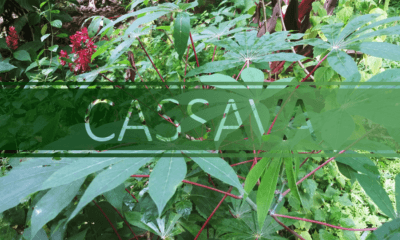
 Special Elements3 years ago
Special Elements3 years agoBest Cassava Manioc, Rankings, Benefits, Cancer Cure & Experience
-
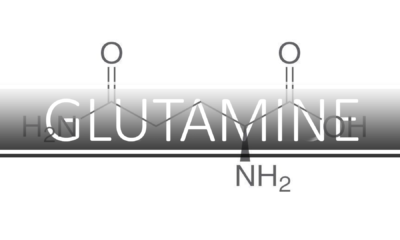
 Special Elements3 years ago
Special Elements3 years agoBest Glutamine Rankings, Benefits, Side Effects & Experience
-
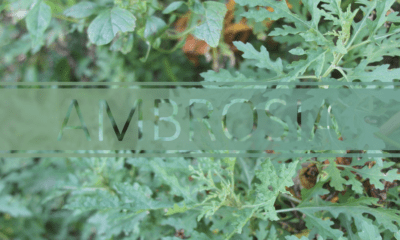
 Special Elements5 years ago
Special Elements5 years agoBest Ambrosia, Wormwood Rankings, Benefits, Side Effects & Experience
-
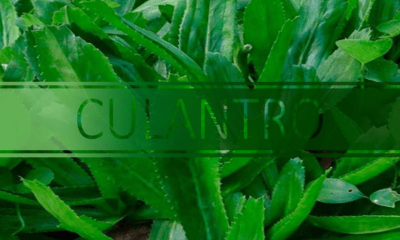
 Special Elements5 years ago
Special Elements5 years agoBest Culantro Rankings, Benefits, Side Effects & Experience
-

 Special Elements3 years ago
Special Elements3 years agoBest Katuk Rankings, Benefits, Side Effects & Experience


